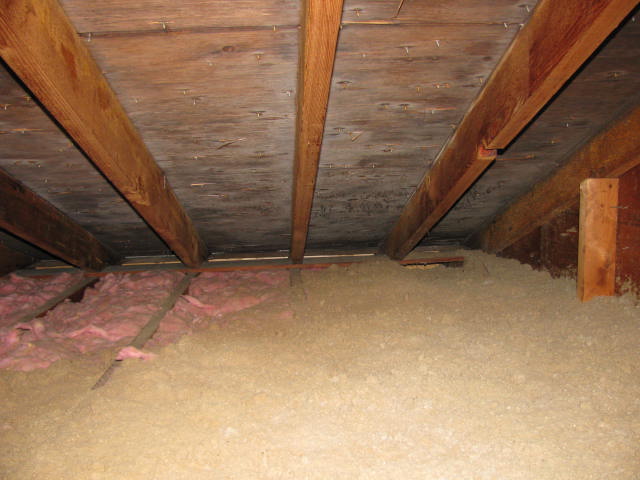During initial construction, any effort to ventilate heated attics can be neglected. This may result walls in the attic to get infested by mold. Professional roofers may need to be hired to deal with leaks and penetration in the roof decking should be managed. Flashing is an important maintenance method between roof shingling. Festering mold problems may occur due to uncontrolled roof leak. Things may get even worse when humidity seeps into wall cavities, causing mold to grow inside the walls themselves. Ice damming may occur along the eves. Leakage in this area may penetrate easily into wall cavities. Water can get trapped between interior vapor barriers and exterior finish materials. In fact, it is possible for a small amount of water to elevate the humidity level inside the wall, which could cause further damages.
Mold growth may eventually be visible along the base of the wall as it penetrates the wall. Mold may release VOCs and spore that can induce health issues among house occupants. Younger individuals could be at risk and elderly may become more vulnerable to asthma and other health problems caused by mold. Some people are especially vulnerable to allergens and for mild cases, proper corrections in ventilation can solve the problem. In more serious cases, we may need to remove the roof shingles and ice guar should be placed along the eves to avoid damming. When the situation has become severe enough, it may be necessary to remove the exterior part of the wall to treat wall cavities. Mold problems could be caused by bathroom fans that are improperly vented and they can generate excess moisture in any part of our house.
Ideally, humid air from the bathroom should be expelled to the exterior, but when the bathroom is located at the middle of the house, the more convenient way is to discharge the humid air to the attic. Actually, the solution should be simple; the fan can be directed to a pipe that will discharge the warm, humid air directly to the exterior. The exterior part of the pipe should be directed downward to prevent water from accumulating inside the pipe. Fortunately, there are things we could do to prevent the mold problem. However, we should be aware that some of the so-called professionals may use improper methods to solve the mold problem. They may use a chemical called encapsulators or heavy paint that encapsulates the mold to prevent it to grow and spread spores. However, these heavy paints could contain some toxic metals, such as lead that can be toxic.
Also, we should avoid using fungicides that don’t have the capability to kill spores. Although molds can be eradicated initially, the tiny spores can penetrate wood pores and stay dormant during the dry summer, only to sprout and emerge as full-sized mold during winter and spring. In this case, we could regularly apply anti-mold paint on all surfaces of the attic, especially before winter to inhibit and minimize mold problems.
